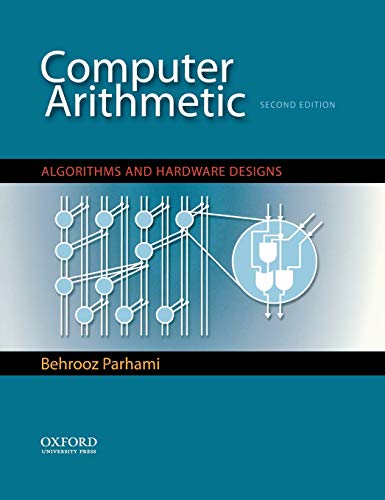

Most ebook files are in PDF format, so you can easily read them using various software such as Foxit Reader or directly on the Google Chrome browser.
Some ebook files are released by publishers in other formats such as .awz, .mobi, .epub, .fb2, etc. You may need to install specific software to read these formats on mobile/PC, such as Calibre.
Please read the tutorial at this link. https://ebooknice.com/page/post?id=faq
We offer FREE conversion to the popular formats you request; however, this may take some time. Therefore, right after payment, please email us, and we will try to provide the service as quickly as possible.
For some exceptional file formats or broken links (if any), please refrain from opening any disputes. Instead, email us first, and we will try to assist within a maximum of 6 hours.
EbookNice Team

Status:
Available0.0
0 reviewsAn indispensable resource for instruction, professional development, and research, Computer Arithmetic: Algorithms and Hardware Designs, Second Edition, combines broad coverage of the underlying theories of computer arithmetic with numerous examples of practical designs, worked-out examples, and a large collection of meaningful problems. This second edition includes a new chapter on reconfigurable arithmetic, in order to address the fact that arithmetic functions are increasingly being implemented on field-programmable gate arrays (FPGAs) and FPGA-like configurable devices. Updated and thoroughly revised, the book offers new and expanded coverage of saturating adders and multipliers, truncated multipliers, fused multiply-add units, overlapped quotient digit selection, bipartite and multipartite tables, reversible logic, dot notation, modular arithmetic, Montgomery modular reduction, division by constants, IEEE floating-point standard formats, and interval arithmetic.
Features:
* Divided into 28 lecture-size chapters
* Emphasizes both the underlying theories of computer arithmetic and actual hardware designs
* Carefully links computer arithmetic to other subfields of computer engineering
* Includes 717 end-of-chapter problems ranging in complexity from simple exercises to mini-projects
* Incorporates many examples of practical designs
* Uses consistent standardized notation throughout
* Instructor's manual includes solutions to text problems
* An author-maintained website contains instructor resources, including complete lecture slides